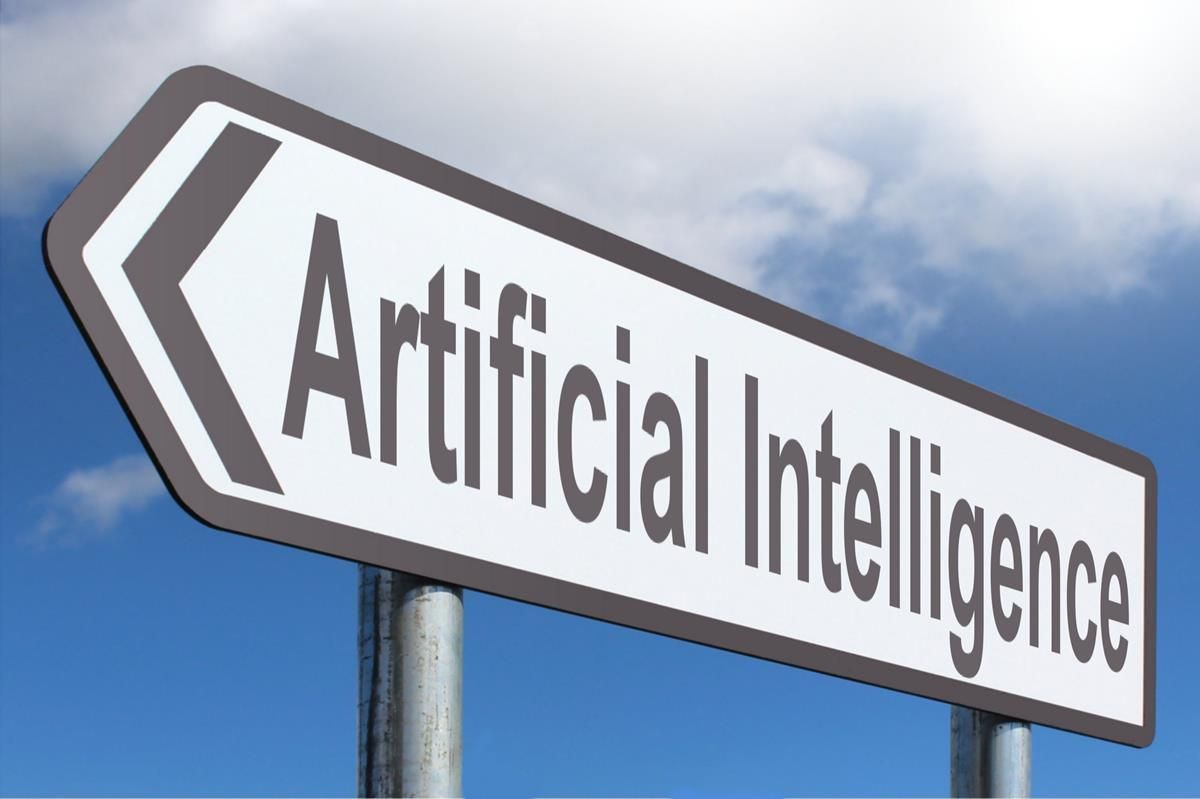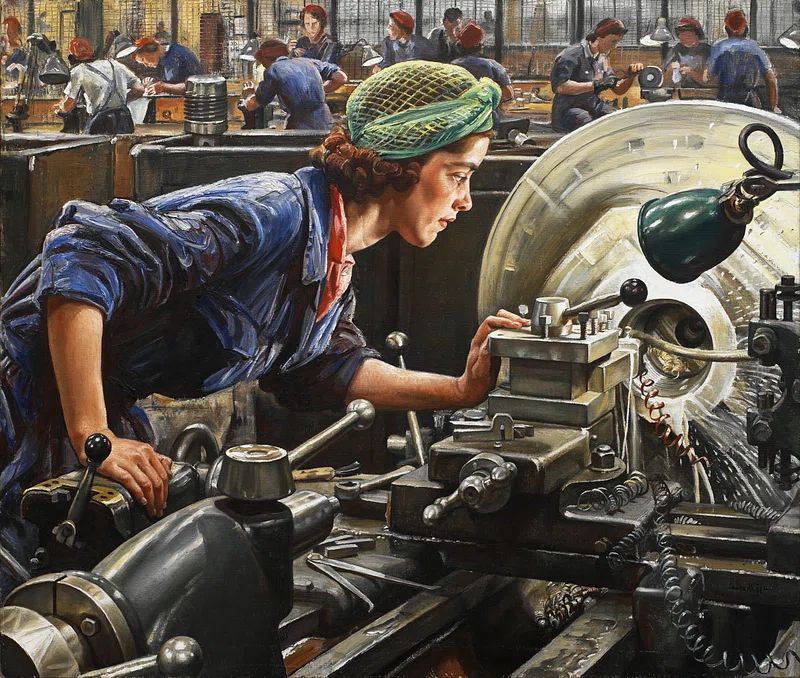
It’s no secret that artificial intelligence, or AI, is on a relentless march forward, reshaping industries and transforming the very fabric of our professional lives. From streamlining workflows to optimizing production, AI’s influence is growing faster than many of us realize, prompting a significant question: Is AI going to take over human jobs, and what does this mean for your career? Experts are already sounding the alarm, with McKinsey projecting that a staggering 30% of U.S. work hours will be automated by 2030. This isn’t just a distant future concept; it’s a rapidly unfolding reality that demands our attention now.
While the prospect of machines taking over roles once held by humans might seem daunting, understanding this shift is crucial for preparing ourselves for what’s ahead. Statistics show that AI will replace 300 million jobs, and a significant 41% of companies worldwide already plan to reduce their workforce by 2030. The McKinsey Report further reveals that the acceleration of generative AI is expected to automate an additional eight percent of American workers’ work hours across all economic sectors, pushing the overall percentage of automated work hours to around 30%. This isn’t just about manual labor; AI-driven software is increasingly handling tasks like data analysis, scheduling, and even customer service, indicating a pervasive shift.
So, as we stare down the barrel of 2030, the real conversation isn’t just about job displacement, but about adaptation and opportunity. While experts caution against a mass loss of all jobs, especially those requiring complex human interaction, it’s clear that many roles will be radically transformed or even disappear. The real test will be how we adjust, upskill, and reskill to navigate this new landscape. Let’s delve into some of the jobs that are most likely to be reshaped by AI in the coming decade, shedding light on why they’re vulnerable and what pathways exist for those looking to pivot.

1. **Data Entry Clerks**Think about it: data entry is the epitome of a repetitive, rule-based task, making it a prime candidate for AI automation. AI-powered systems are incredibly efficient at processing massive amounts of structured data, not just quickly but with remarkable accuracy. This greatly reduces the need for human clerks, who are prone to errors and require breaks.
These sophisticated systems excel at managing immense workloads, operating continuously without fatigue. A study by McKinsey underscores this reality, predicting that up to 38% of data entry tasks could be automated by 2030. For those currently in this role, the LiveCareerUK report suggests a clear direction: re-skill in data analysis or data management.
By learning essential tools like Excel, SQL, or Python, individuals can shift into roles that demand interpretation and action based on data, moving beyond simple record-keeping. This pivot transforms a vulnerable position into one focused on strategic insights, a skill AI can assist with but not fully replicate.

2. **Telemarketers**Remember those cold calls that always seem to interrupt your day? Well, AI is rapidly stepping in to take over. Artificial intelligence-powered chatbots and virtual assistants are becoming incredibly adept at handling consumer inquiries, delivering promotional offers, and even conducting cold calls. They’re programmed to manage numerous conversations simultaneously, instantly accessing vast information databases.
Unlike human telemarketers, these AI systems never require a day off, ensuring constant operation. The efficiency is undeniable, with AI chatbots capable of reducing telemarketing costs by up to 80%. This makes telemarketing as a human-centered profession increasingly unsustainable. The good news is, there’s a path forward.
Experts suggest re-skilling in digital marketing or customer success. Building skills in CRM tools, social media engagement, and sales strategy allows professionals to remain valuable in human-centered sales roles, where genuine connection and nuanced understanding still matter. It’s about leveraging human empathy in a world increasingly run by algorithms.
Read more about: The Bedding Bailout: One Sleepover Horror Story That Proves Why Clean Sheets Are the Ultimate Escape Plan

3. **Receptionists**Walk into many modern hotels or corporate offices, and you might already encounter automated check-in systems. These are just the tip of the iceberg when it comes to AI’s impact on receptionist roles. AI-based systems are proving to be faster and more efficient than humans at handling tasks like visitor logging, appointment scheduling, and answering basic questions.
These systems can process information almost instantaneously, directing queries or scheduling meetings without the need for human intervention. Research suggests that the widespread adoption of these AI-based robots could significantly reduce the demand for human receptionists in the next decade. The convenience and cost-effectiveness of these automated solutions are a powerful driver for their implementation across various industries.
While the human touch remains valuable in some high-touch environments, the repetitive and rule-based nature of many receptionist duties makes them highly susceptible to automation. This shift underscores the broader trend of AI taking over predictable administrative tasks.
Read more about: Don’t Lose Money on Hotel Bookings: Your Guide to Avoiding & Getting Out of Non-Refundable Stays

4. **Customer Service Representatives**Customer service is one of the industries experiencing some of the biggest transformations due to AI. Chatbots and virtual assistants, driven by AI, are increasingly handling a growing number of customer service inquiries across various sectors. These advanced systems utilize natural language processing (NLP) and machine learning (ML) to resolve a wide range of problems, from simple FAQs to more complex issues.
Gartner, a leading research and advisory company, predicts that by 2027, a significant 25% of customer service operations will be utilizing AI chatbots, thereby significantly reducing the demand for human agents. This doesn’t mean the end of all customer service jobs, but it certainly signals a major shift in the type of interactions humans will handle.
For those in customer service, the pivot is clear: focus on more complex, empathetic, and problem-solving roles. LiveCareerUK advises re-skilling in technical support or customer success, concentrating on functions that require a deeper level of expertise, empathy, and the ability to build lasting customer relationships—qualities AI still struggles to master.
Read more about: Michael N. Castle, Bipartisan Delaware Congressman and Governor, Dies at 86

5. **Bookkeeping Clerks**For anyone involved in traditional bookkeeping, the writing is already on the wall. Accounting software powered by artificial intelligence is highly capable of managing financial transactions, reconciling statements, and even preparing tax returns with remarkable speed and accuracy. These technologies are constantly evolving, making the role of human bookkeeping clerks less and less necessary.
It’s widely expected that by 2030, many standard bookkeeping tasks will be fully automated, leaving very little room for human involvement in basic number-crunching. This automation frees up resources and reduces the potential for human error in financial records. The drive for efficiency and cost savings makes AI a highly attractive option for businesses.
To remain valuable in the finance sector, the recommendation is to pivot into financial analysis or advisory roles. This means moving beyond basic number-crunching to deliver strategic insights that businesses can actively use for decision-making. AI can provide the data, but humans are still needed to interpret it and apply it strategically.

6. **Retail Cashiers**If you’ve shopped at an Amazon Go store or a modern grocery outlet, you’ve witnessed the future of retail firsthand. Traditional retail cashiers have already begun to lose significant ground to automated checkout systems. These systems, utilizing a combination of sensors, cameras, and sophisticated AI algorithms, flawlessly track purchases and handle payments without requiring any human intervention.
This trend is not slowing down; in fact, it’s expected to accelerate dramatically. Many major retailers are already planning or implementing similar technologies across their stores with the primary goal of reducing labor costs and improving efficiency. This shift fundamentally alters the retail landscape, redefining the role of human staff.
The Pew Research Center’s expert survey highlighted this vulnerability, with 73% of experts agreeing that cashiers are among the roles most at risk. For cashiers seeking to future-proof their careers, LiveCareerUK suggests re-skilling in retail management or supply chain operations. These roles require strategic thinking, leadership, and technical know-how within the broader retail ecosystem, skills that are less easily automated.
Read more about: Panera Bread Pioneers Personalization: How AI and Digital Innovation Are Reshaping the Fast-Casual Experience

7. **Truck and Taxi Drivers**Envision a future where your package is delivered by a self-driving truck, or your next taxi ride involves no human behind the wheel. Self-driving technology is making monumental strides, with industry giants like Tesla and Waymo leading the charge in autonomous vehicle development. This advancement poses a significant threat to a large portion of the trucking and taxi industry.
Autonomous vehicles are particularly poised to replace long-haul routes, where human drivers are most susceptible to fatigue and require mandatory breaks. The efficiency and continuous operation offered by self-driving trucks and taxis are a massive draw for logistics and transportation companies. By 2030, it’s projected that self-driving trucks and taxis could eliminate millions of driving jobs globally.
The Pew Research Center’s expert survey underlines this concern, with 62% of experts believing truck drivers are at risk, though only 33% of the general public currently agrees. Jeff Gottfried, Pew’s associate director of research, notes that truck driving jobs are primed for disruption as driverless vehicle technology improves. This represents a monumental shift in how goods and people will move, demanding new skills from those in the transportation sector.
The journey through AI’s impact on the workforce continues, revealing more roles that are undergoing significant transformation as we hurtle towards 2030. While the initial seven roles we explored shed light on AI’s ability to automate repetitive and data-intensive tasks, the next set of jobs shows just how pervasive this technological shift truly is, extending into areas once thought to be exclusively human domains. But fear not, this isn’t just a story of displacement; it’s also a compelling narrative about adaptation, the enduring power of human skills, and how we can effectively future-proof our careers in this brave new AI-driven world.
Let’s dive deeper into the next wave of professions poised for change:
Read more about: Student Loan Relief Unpacked: Navigating Eligibility for Up to $20,000 in Federal Forgiveness, State Programs, and Upcoming Changes

8. **Proofreaders**In the realm of written communication, AI is rapidly becoming a formidable assistant, and in many cases, a replacement. Tools like Grammarly and other advanced language processing software are now incredibly accurate at identifying and correcting spelling, grammar, and even stylistic errors. These systems are constantly learning from vast datasets, improving their capabilities over time and making the traditional role of human proofreaders increasingly redundant.
It’s widely anticipated that AI could handle up to 90% of all proofreading tasks by 2030, streamlining workflows and enhancing efficiency in publishing and content creation. This isn’t to say humans are entirely out of the picture; even generative AI tools for writing still often operate in coordination with human oversight. However, for those in this field, the pivot is clear: re-skill in content strategy or digital marketing. This allows professionals to leverage their innate writing instincts for higher-order tasks such as brand storytelling, search engine optimization (SEO), and campaign planning, moving beyond mere error correction.

9. **Manufacturing Workers**The factory floor is perhaps one of the most visual examples of AI and robotics in action. Manufacturing is undergoing a profound transformation as machines powered by machine learning algorithms take over a wide array of manual tasks on assembly lines. These robotic systems are capable of working at speeds and with a precision that humans simply cannot match, operating around the clock without the need for breaks, sick days, or overtime.
This relentless drive for efficiency and cost reduction means the trend of automation in manufacturing is only set to accelerate. According to a report by the World Economic Forum, we can expect a significant 30% reduction in human manufacturing roles by 2030. This shift fundamentally redefines what it means to work in manufacturing, emphasizing the need for new skill sets that complement, rather than compete with, automated systems.
Read more about: Cadillac’s Golden Age: Unpacking the Sumptuous Success of the De Ville, A True Icon of 1970s American Luxury

10. **Delivery Drivers**The sight of a drone zipping through the sky with a package, or an autonomous vehicle navigating city streets, is quickly moving from science fiction to everyday reality. Major logistics giants like Amazon and UPS are pouring significant investments into drone delivery systems, with the ambitious goal of eventually replacing human delivery drivers, especially for shorter distances. These AI-powered logistics systems and autonomous vehicles are increasingly being tested and refined for practical application.
As these technologies continue to advance, AI-driven delivery systems are widely predicted to dominate the market by the end of the decade. The economic incentives are clear: reduced labor costs, increased speed, and improved efficiency. This future suggests a major reevaluation of traditional delivery roles, pushing for a pivot towards roles that manage and maintain these sophisticated automated systems.
Read more about: A New Era of Discovery: Unlocking the Profound Intelligence and Intricate Lives of Dolphins

11. **Security Guards**Even the watchful eye of a human security guard is facing an AI-powered challenge. Advanced AI surveillance systems are becoming incredibly effective, incorporating sophisticated technologies like facial recognition and behavior analysis. These systems are designed to continuously monitor vast areas, identify irregularities, and immediately alert relevant authorities to potential threats or incidents.
One of the most appealing aspects for businesses is the cost-effectiveness: these systems represent a one-time investment, eliminating ongoing labor costs. Consequently, the demand for human security personnel is projected to decline sharply in the coming years as these intelligent monitoring solutions become more widespread and capable. This means a shift from on-site patrol to monitoring and responding to alerts generated by AI.
Read more about: Biden’s Banking Reckoning: Post-Collapse Reforms and the Looming Battle for Financial Stability

12. **Market Research Analysts**The world of data analysis, once a domain heavily reliant on human insight and manual processing, is now being revolutionized by AI. AI-powered analytics tools can ingest and analyze massive quantities of market data at speeds far beyond human capability. They excel at spotting subtle trends, predicting complex consumer behaviors, and providing actionable insights with remarkable accuracy.
By 2030, it’s highly anticipated that AI-powered tools will dominate market research, significantly reducing the need for human analysts in roles focused solely on data collection and basic reporting. To remain valuable, professionals in this field are advised to re-skill in business analytics or data storytelling. This involves moving beyond mere data collection to learning how to transform insights into strategic business decisions, utilizing advanced tools like Tableau, Power BI, or Python. It’s about interpreting the ‘why’ behind the ‘what’ and communicating it effectively.
Read more about: From ‘Great Genes’ to Political Flashpoint: How Sydney Sweeney’s American Eagle Ad Ignited a Culture War, Drawing Trump’s Endorsement

13. **Pharmacists**The pharmaceutical industry, known for its precision and regulation, is also feeling the winds of AI change. Artificial intelligence algorithms are increasingly being deployed in pharmacies to assist with tasks such as prescribing medications based on comprehensive patient histories and managing intricate inventory systems. This rise in AI capabilities raises a serious concern about potential job displacement for traditional pharmacists, with predictions suggesting it could cut off at least 50% of pharmacists in the industry.
Dr. Marilyn Stebbins, a pharmacy professor at UCSF, succinctly puts it: “If the pharmacists don’t prove their value outside of their existing roles, automation will win because ultimately it will be cheaper.” Tasks like prescription filling and inventory management are prime candidates for automation, reducing the need for human intervention in these repetitive processes. While many of the routine tasks performed by chemists could be automated, human oversight and the unique decision-making capacity of a qualified pharmacist remain crucial in complex or novel situations. This could lead to a new “2-tier paradigm” involving “dispensing” and “non-dispensing” pharmacists, where the latter focuses on higher-level patient care and consultation.
Read more about: Smart Dollar Store Shopping: What Are Worthy and What You Should Skip

14. **Legal Assistants**The legal sector, often seen as traditional, is not immune to AI’s transformative power. Artificial intelligence tools are already proving invaluable to lawyers by automating time-consuming tasks such as contract analysis, extensive document review, and even predicting case outcomes based on vast databases of past legal precedents. These tools can process enormous volumes of legal documents far faster and with greater accuracy than human counterparts, making the roles of traditional legal assistants progressively less necessary for basic tasks.
The impact is significant, with 67% of legal professionals expecting a “transformational or high-impact change” in their industry within the next five years due to AI. Forrester, a leading research firm, predicts that nearly 80% of jobs in the legal sector will be significantly reshaped by AI technology. For those in paralegal or legal assistant roles, the recommended pivot is towards legal tech, compliance, or litigation support. This involves applying legal knowledge in technology-forward fields that strategically blend law with advanced AI and automation tools, focusing on the sophisticated application and oversight of these technologies.
Read more about: Gavin Newsom: Unpacking a Decades-Long Political Ascent Defined by Principled Confrontation and Unyielding Conviction

15. **Financial Analysts**The world of finance, with its heavy reliance on data and predictive models, is another prime target for AI-driven transformation. Artificial intelligence algorithms are becoming remarkably adept at analyzing complex financial data, accurately forecasting market trends, and even generating sophisticated investment recommendations. Their ability to process information at lightning speed and identify patterns that might elude human perception makes them incredibly powerful tools.
As AI becomes the primary tool for tasks like portfolio management and high-frequency trading decisions, there could be a significant reduction in the need for human financial analysts at many firms over the next decade. The job market is undoubtedly changing as AI rapidly and accurately handles repetitive, rule-based financial tasks. Jamie Marshall, a tech founder, emphasizes that “financial professionals who embrace these technologies will be better equipped to navigate the complexities of modern markets and drive success in their organizations,” implying a shift towards roles that interpret and strategically leverage AI-generated insights, rather than just crunching numbers manually.
### The Indispensable Human Touch: What AI Can’t Replicate
While it’s clear that AI is reshaping countless industries and automating a significant portion of our work lives, it’s equally important to understand its limitations. AI, for all its sophistication, is still bound by its programming and the data it’s fed. This inherent constraint means that certain jobs, particularly those that demand uniquely human qualities, remain firmly out of AI’s reach for the foreseeable future. The true game-changer will be human skills that AI simply cannot replicate, not just technical prowess.
**Human Emotions and Empathy: The AI Blindspot**
One of AI’s most profound limitations lies in its inability to genuinely understand and express human emotions or make empathetic decisions. While a machine can be programmed to analyze behavioral patterns or even mimic conversational responses, it fundamentally lacks the capacity for true emotional intelligence. This is why roles that necessitate navigating complex human relationships, resolving intricate conflicts, and making personnel decisions based on subtle motivations and feelings—like those of HR managers or therapists—are largely safe. AI, no matter how advanced, will likely never fully grasp the nuanced subtleties of human connection or the profound importance of empathy in fostering trust.
**Creativity: The Final Frontier AI Can’t Cross**
Another realm where AI faces significant challenges is genuine creativity. While AI can undoubtedly generate content, suggest innovative ideas, or even assist in crafting basic narratives, it profoundly lacks the imaginative spark that truly defines human creativity. It struggles to produce original thought, engage in deep, intuitive storytelling, or initiate truly novel ideation skills—qualities that are the bedrock for professions like writers, graphic designers, artists, and innovators. An AI might assemble existing phrases or styles into a cohesive piece, but it doesn’t possess the intuition, the lived experiences, or the capacity for abstract thought that fuels truly groundbreaking human artistry. It can iterate on what it’s been taught, but it cannot spontaneously invent something entirely new outside its training parameters.
**Complex Human Interactions: More Than Just Logic**
Consider professions that thrive on intricate human interactions, where success hinges on more than just logical processing. Roles such as event planners or psychologists immediately come to mind. There is no algorithm that can genuinely replace the delicate human touch required in these professions. Event coordinators, for instance, must not only organize logistics but also compromise, mediate, and craft experiences that evoke powerful feelings and connections among attendees. Similarly, a psychologist relies on a profound understanding of human behavior, deep empathy, and the cultivation of trust—qualities that AI simply cannot replicate. Comforting a distressed client, discerning subtle emotional cues, and customizing advice for highly specific, personal situations are entirely different from merely analyzing data points. This is where AI hits a definitive wall, as it cannot truly ‘be there’ for another human in the way another human can.
**AI’s Struggle With Unpredictable Scenarios**
Many jobs operate not by strict guidelines but within fluid, unpredictable environments. Take project managers, for example. They constantly encounter situations where plans must pivot without warning, teams face interpersonal difficulties, and prompt, innovative problem-solving is crucial to maintaining momentum. While AI can certainly assist with resource allocation or scheduling, it is fundamentally unable to handle the frequently erratic and emotional human elements that are inherent in such roles. When improvisation is required, or when emotions run high among team members, AI’s logic-driven decision-making process struggles to adapt, highlighting the irreplaceable value of human agility and emotional intelligence in dynamic work settings.
Chris Hinkle, CEO of TRG Datacenters, identifies four critical skills that employers will increasingly prize in the coming years because AI cannot replace them. First is **Conflict Resolution**: Hinkle notes that disagreements are inevitable, and employers seek individuals who know how to de-escalate situations, maintain composure under pressure, and discover common ground. This ‘soft skill’ is vital for preventing minor issues from escalating into costly problems. Second, **Adaptability**: In a world where change is almost weekly, the ability to quickly learn and adapt when circumstances shift is paramount. Third, **Leadership**: Hinkle explains that even with the best tools, people crave connection to a mission. A strong leader provides the ‘why’, offers clear direction, and motivates others amidst uncertainty or chaos, fostering loyalty and performance. Finally, **Systems Thinking**: Hinkle insists that while many tools can perform analysis, very few people can truly “look at the output and say, ‘Here’s how this impacts our marketing, support, and ops all at once.’” This big-picture view is essential for making decisions that genuinely work across an entire organization.
Sara Gutierrez, SHL’s chief science officer, further emphasizes that skills harder to automate, such as strategic thinking, creativity, acting ethically, and the ability to deliver human-tech collaboration, will matter most. She highlights “a sharp rise in demand for the ability to critically evaluate and analyze information, generate new ideas and to develop innovative approaches to problems.” These are the capabilities that underpin the effective use of AI tools and distinguish those who can truly leverage technology from those merely exposed to it. Employees who can effectively use generative AI tools, interpret their data outputs, and integrate those insights into their workflows are rapidly becoming indispensable.
Atalia Horenshtien, head of AI practice at Customertimes, advises focusing on what AI “can’t do…yet.” She believes AI will likely replace specific tasks rather than entire jobs, particularly those rooted in repetition. Crucially, she points out what AI “still can’t replicate well: original thinking, emotional intelligence, ethical judgment and complex decision-making.” Her advice is straightforward: “If your role leans heavily on these, double down. If not, it’s time to pivot.” To truly outsmart the AI threats to your career, the key lies in identifying the job skills AI will and won’t replace, and actively cultivating those irreplaceable human capabilities.
### Future-Proofing Your Career in the Age of AI
So, what does all this mean for you? The overarching message is clear: adaptation is not just a buzzword; it’s a career imperative. Instead of viewing AI as an existential threat, consider it a powerful catalyst for professional growth and reinvention. The experts are not predicting a mass job loss across the board, but rather a profound transformation of existing roles. The jobs that demand characteristics unique to humans—such as empathy, creativity, emotional intelligence, and the capacity to negotiate challenging social situations—are ultimately the ones that will be most protected from AI.
For those whose jobs are on the ‘chopping block,’ the advice is actionable and consistent: re-skill and upskill. This means proactively acquiring new competencies that complement AI, focusing on analytical interpretation, strategic oversight, and leveraging AI tools to enhance human capabilities. It’s about becoming indispensable by demonstrating that you can go beyond listing skills and truly apply them in real-world contexts, perhaps by highlighting projects where AI tools were used to solve business problems, or by showcasing adaptability during organizational change. Creating content about your learning journey with emerging tools can be especially compelling.
Read more about: Kremlin Imposes Windfall Tax on Russian Companies, Oligarchs to Counter War-Induced Financial Strain
In essence, AI is not just about replacing human labor; it’s often about augmenting human capabilities. In fields like medicine, AI assists doctors by analyzing scans or suggesting treatment plans, but the ultimate diagnostic and empathetic decision-making still rests with the human. While AI can help and expedite many tasks, human professionals remain indispensable for comprehending unique circumstances and rendering compassionate decisions. As AI continues its relentless development, certain roles may indeed dwindle, but jobs focusing on people, innovation, and complex problem-solving will only grow in importance. The future workforce won’t be about humans vs. machines, but rather humans *with* machines, forging a new era of productivity and ingenuity.



